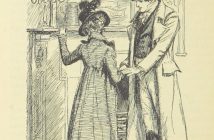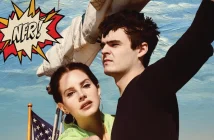For years women and men have broken down boundaries between what is a male and a female role. One place that the sexes are often restricted to a gendered role is the acting world. A notable exception is of course the stage: Shakespeare plays were well known for cross-gender acting. With the new millennium the film industry granted us with notable roles where women played men, and their true sex was never revealed. These actors were cast based on talent, something that can only speak of a brighter future for all actors. However, recently with a need to push equality we have seen the rise of the ‘token female.’ For example, Thor now has a better selling female counterpart comic series and Warner Bro’s The Flash‘s Bug-Eyed Bandit has now had a gender swap to female and will be portrayed by Emily Kinney. The question the arises: what is ground breaking and what is simply trying to tick a box within the film industry?
It’s 1935, and in Sylvia Scarlett Katharine Hepburn portrays a female who masquerades as a boy to escape the police with her father not to be recognised until a plucky young artist can’t stop thinking about her. A notable part of Romantic Comedy history as well as advancement in female roles in cinema, the film is also known for being famously unsuccessful. Katharine was famously labelled as “box-office poison” which would take her years to move away from. While a woman disguising herself as a man isn’t exactly ground breaking and can be traced to the likes of Twelfth Night, the fact that the failure of this film was directly pinned on the female lead perhaps hints that the cross-gender acting was expected to remain within the realms of the theatre, and away from the silver screen.
Flash forward to 1982 with our beloved Julia Andrews in Victor/Victoria. In the movie a struggling female soprano (Andrews) finds work playing a male/female impersonator, but it complicates her personal life. Of course we’re back to the comedy genre but now we have the wonderful addition of musical. Thankfully, this cross-gender acting experiment took a successful turn with seven Academy Award nominations and a for Best Original Song Score. While Andrews didn’t win for Best Actress, she certainly proved a huge success and certainly broke down the divide between gender roles in film a little bit. Arguably though this perhaps is due to Julia Andrews successful and established career when compared to Katharine Hepburn’s.
This brings us nicely to the new millennium when comedian Kathy Burke takes on the role of beloved Perry in cult classic Kevin and Perry Go Large. While ostensibly about trying to become dance music DJ’s, the real story is about two 15 year old boys trying to lose their virginity. At no point is Perry revealed as a female so we can assume that throughout the movie Kathy is portraying a male. A marked step in equality of roles, but in reality this was due to an already established partnership. Kathy Burke and Harry Enfield had worked together numerous times and the film was loosely based on a previous sketch from Enfield’s 1990 television programme. While the role Burke portrayed was earned because of a return to a previous role, a step away from the romantic comedy and no reveal of Burke’s gender make this a win for cross-gender acting.
It takes seven more years before we see another woman portray a man solely on the silver screen and it takes award winning actress Cate Blanchett and a biopic about Bob Dylan entitled I’m Not There. Six characters embody a different aspect of the musician’s life and work, and it was our girl that went ahead and won the Golden Globe for her role. Critic Anthony DeCurtis said that “it’s hard to imagine that any male actor, or any less-gifted female actor for that matter, could have lent such rich texture to the role.” For once gender wasn’t important to such a high profile role, but talent.
Recently with roles such as Gazelle in The Kingsman and the Bug-Eyed Bandit in The Flash being switched to female, we have to wonder if is this due to talent like Blanchett, or is it simply to provide a female figure for audiences? Although on shows such as The Last Leg it was claimed that Gazelle was changed to a female because no male would portray the murderous bench-person, Vaughn himself told website Superherohype that “Gazelle, we turned into a woman sort of by default, after we realised we had a lot of men in this film, and I thought we needed to balance it out a bit. I just liked the idea of making Gazelle sexy.” This certainly isn’t a step in the right direction for gender equality. Luckily for us, Sofia Boutella made a fantastic Gazelle, though it would have been nice for this gender swap to have been based on talent.
Though the gender change of the Bug-Eyed Bandit has not currently been discussed, with creators of Warner Bro’s The Flash we’re all hoping here that Emily Kinney’s performances on Glee and The Walking Dead have landed her an amazing role. We’ll certainly be waiting and watching. While Hollywood occasionally still goes back to the woman disguising as a man role, see Glen Close in 2011’s Albert Nobbs, we’ve certainly seen a more progressive attitude to cross-gender acting. Though it’s slightly different, we’re looking forward to Eddie Redmayne’s next outing as Einar Wegener in Danish Girl, and of course more award winning cross-gender acting because Blanchett has certainly proved it can be a success. I’d love to see Chris Hemsworth play a woman successfully, wouldn’t you?



